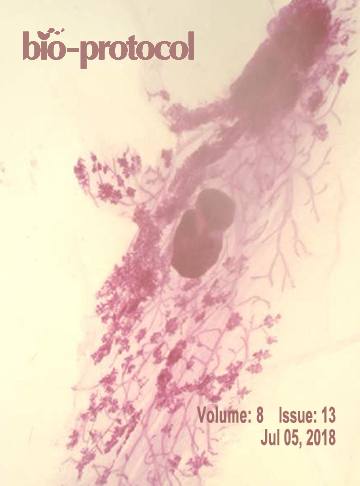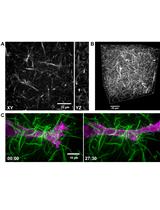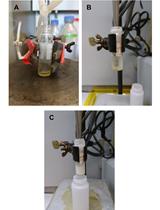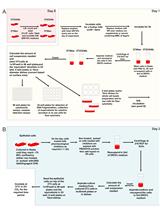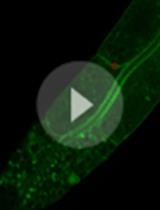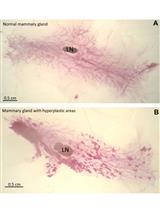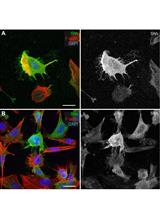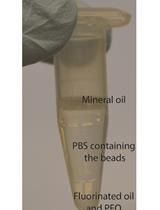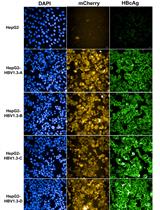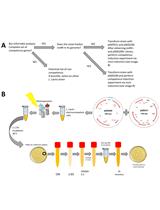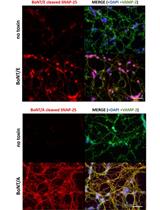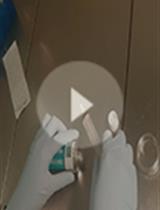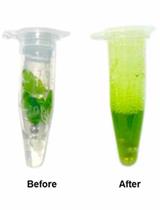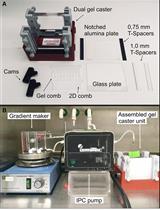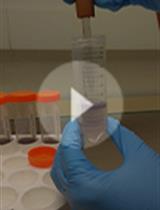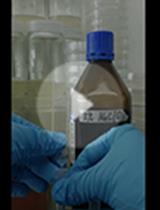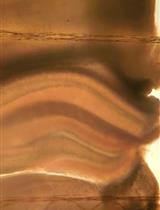往期刊物2018
卷册: 8, 期号: 13
生物化学
Fluorescent Labeling of Rat-tail Collagen for 3D Fluorescence Imaging
用于3D荧光成像的鼠尾胶的荧光标记
Assessment of Uptake and Biodistribution of Radiolabeled Cholesterol in Mice Using Gavaged Recombinant Triglyceride-rich Lipoprotein Particles (rTRL)
使用管饲法重组富含甘油三酯的脂蛋白颗粒(rTRL)来评估小鼠中放射性标记的胆固醇的摄取和生物分布
癌症生物学
An in vitro Co-culture System for the Activation of CD40 by Membrane-presented CD40 Ligand versus Soluble Agonist
细胞膜呈递CD40配体与可溶性激动剂激活CD40的体外共培养系统
细胞生物学
FRAP: A Powerful Method to Evaluate Membrane Fluidity in Caenorhabditis elegans
荧光漂白恢复:一种评估秀丽隐杆线虫膜流动性的有效方法
发育生物学
Mouse Mammary Gland Whole Mount Preparation and Analysis
小鼠乳腺的全胚胎准备和分析
Preserve Cultured Cell Cytonemes through a Modified Electron Microscopy Fixation
通过一种改良的电子显微技术固定方法保存培养的细胞导管
微生物学
Bacterial Microcolonies in Gel Beads for High-throughput Screening
凝胶珠细菌微菌落的高通量筛选
Sleeping Beauty Transposon-based System for Rapid Generation of HBV-replicating Stable Cell Lines
使用基于睡美人转座子的系统快速生成HBV复制稳定细胞系
Induction of Natural Competence in Genetically-modified Lactococcus lactis
转基因乳酸乳球菌自然感受态的诱导
神经科学
Preparation of Cerebellum Granule Neurons from Mouse or Rat Pups and Evaluation of Clostridial Neurotoxin Activity and Their Inhibitors by Western Blot and Immunohistochemistry
用老鼠或鼠仔制备小脑颗粒神经元并通过免疫印迹和免疫组织化学法评估梭菌神经毒素活性及其抑制剂
Brain Tissue Culture of Per2::Luciferase Transgenic Mice for ex vivo Bioluminescence
用于离体生物发光 的Per2::萤光素酶转基因小鼠脑组织的培养
植物科学
An Optimized CTAB Method for Genomic DNA Extraction from Freshly-picked Pinnae of Fern, Adiantum capillus-veneris L.
一种从新鲜收取的铁线蕨样品中提取基因组DNA 的优化CTAB法
Quantification of Starch in Guard Cells of Arabidopsis thaliana
定量测定拟南芥保卫细胞中的淀粉
Separation of Thylakoid Protein Complexes with Two-dimensional Native-PAGE
采用二维非变性PAGE分离类囊体蛋白复合物
Isolation of Intact Vacuoles from Petunia Petals and Extraction of Sequestered Glycosylated Phenylpropanoid Compounds
从矮牵牛花瓣中分离完整的液泡并提取分离糖基化苯丙素类化合物
A Modified Approach for Axenic Cultivation of Spores of Fern Adiantum capillus-veneris L. with High Germination Rate
一种铁线蕨孢子具有高发芽率的改良的无菌培养方法


